Welcome to "Fish Bits": fishing news from around the sanctuary system.
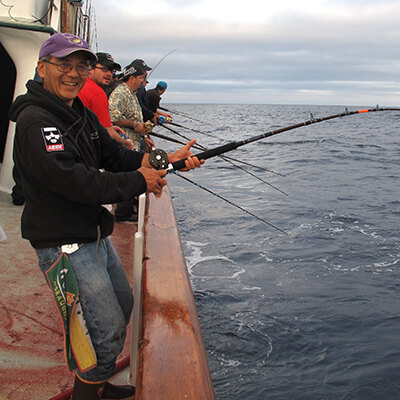
Fishing Happens Here
Recreational fishing is one of the most popular pastimes in the United States—and the majority of national marine sanctuary waters are open to recreational anglers. These ocean parks provide excellent opportunities for sustainable recreational fishing and boating!
2025

NOAA and Fishermen Work Together to Identify Shipwrecks in Stellwagen Bank National Marine Sanctuary
This innovative mapping initiative brings together scientists, engineers, sanctuary staff, and the fishing industry. Through this initiative, NOAA hires local fishermen and their vessels as a work platform to tow side-scan sonar (a "towfish") under the guidance of a locally-contracted sonar team.

High Schoolers Help Federal Biologists Unravel the Mystery of Spinning Salmon
What we thought was a typical day in Ms. Handa's AP Environmental Studies class took an unexpected turn as we observed the salmon for the first time in our classroom tank. We had learned that just four years prior, researchers observed salmon in tanks and noticed erratic behavior such as swimming in different directions, spinning, and displaying corkscrew swim patterns. Within a few days, some of those young Chinook salmon were reported dead, and during the next two weeks their mysterious behavior seemed impossible to figure out, until they added vitamin B1 (thiamine) to their water and the fish started to behave normally again.

How Sharks Keep the Ocean Healthy
Sharks have long been portrayed as terrifying predators of the deep, but really, they are essential guardians of the ocean. Despite their fearsome reputation, these apex predators play a crucial role in maintaining the delicate balance of marine ecosystems. Sharks contribute in ways that might surprise you, from regulating prey populations to keeping coral reefs thriving. In this article, we'll explore five key ways sharks help keep our ocean healthy, including in your national marine sanctuaries, and discuss why healthy shark populations are vital for the future of all marine life.

Catch and Click: Six Tips for the Perfect Fish Photo
Tips for taking the best fish selfies and shots holding fish—using just your smartphone.
2024

Rachel Bowman Leads Lionfish Invitationals at Flower Garden Banks National Marine Sanctuary
Meet Rachel Bowman, the "lionfish huntress," who has removed thousands of lionfish from reefs in Florida Keys and Flower Garden Banks national marine sanctuaries. As invasive lionfish spread up and down the East Coast of the United States and throughout the Caribbean, staff at Flower Garden Banks National Marine Sanctuary started planning for ways to address the inevitable problem of this invasive species reaching the Gulf of Mexico.
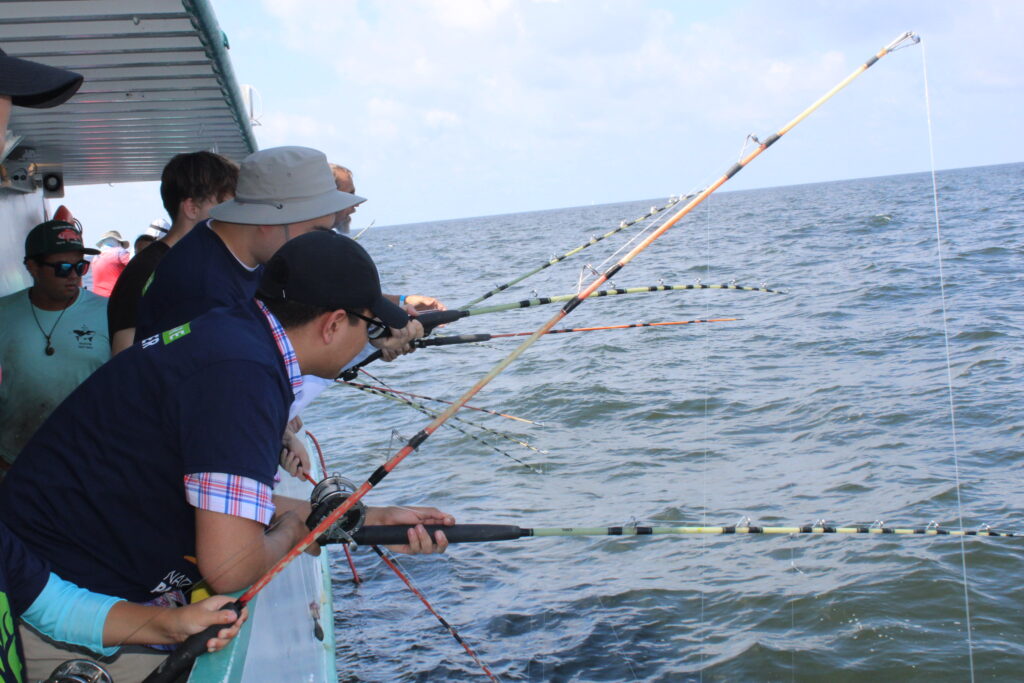
Nature's Healing Power: Military Families Go Fishing in National Marine Sanctuaries
Since 2023, the National Marine Sanctuary Foundation, NOAA Fisheries, NOAA's Office of National Marine Sanctuaries, and National Park Trust have been working together to engage service members and their families in meaningful outdoor experiences focused on providing access to recreational fishing opportunities in national marine sanctuaries across the country. Check out the blog series!

Grace Casselberry: Protecting the Ocean's Top Predators
Dr. Nancy Foster Scholar, Grace Casselberry is studying the interactions between great hammerhead sharks (Sphyrna mokarran) and Atlantic tarpon (Megalops atlanticus) in Florida Keys National Marine Sanctuary. When a shark snatches a fish that an angler is fighting on their fishing line before it can be landed, this interaction is called a "shark depredation" event. Depredation has a negative impact on the livelihoods of fishing guides. Casselberry's research suggests that anglers can use fishing gear that will allow them to land tarpon faster, thus reducing fight times and the opportunity for depredation.

To Protect and Serve: NOAA Enforcement Gives Back to Military Families
NOAA Law Enforcement officers spent a day on the water teaching veterans, active duty members, and their families about safe and legal fishing practices.
2023
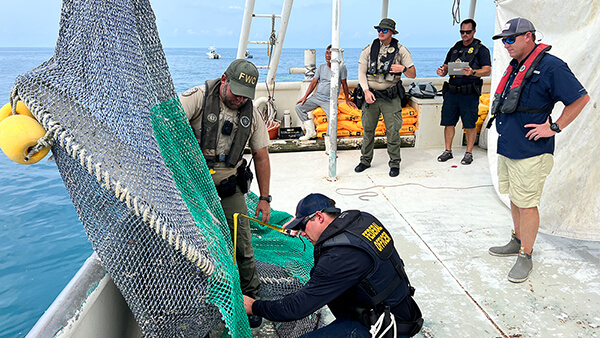
TED TALK for Turtles: NOAA Enforcement Works With Fishermen to Protect Marine Life in National Marine Sanctuaries
Sometimes fishermen catch and discard animals they do not want, cannot sell, or are not allowed to keep, creating what we know as 'bycatch'. There is a solution to this threat, and federal and state agencies are working with fishermen to help make a difference.
2022
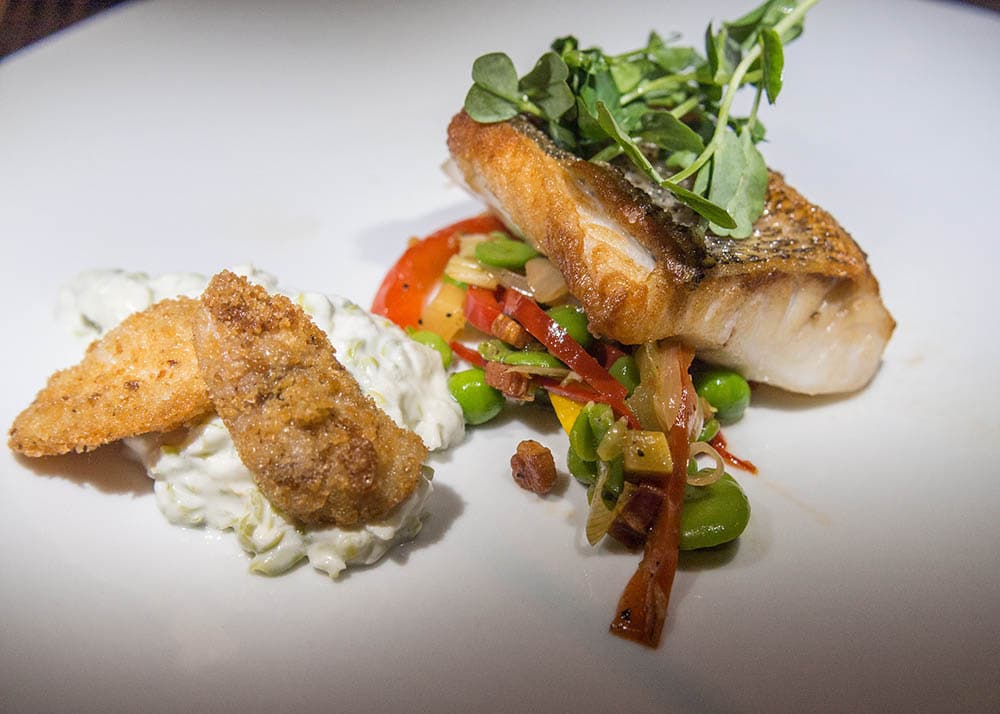
Love Seafood? Enjoy a Taste of National Marine Sanctuaries
Many national marine sanctuaries support community food traditions that have become culinary staples in their regions. Get out on the water and try your hand at a sustainably caught fresh catch or simply stop in to one of the many locally-owned restaurants that serve up their local best from the waters in and around national marine sanctuaries.
2021
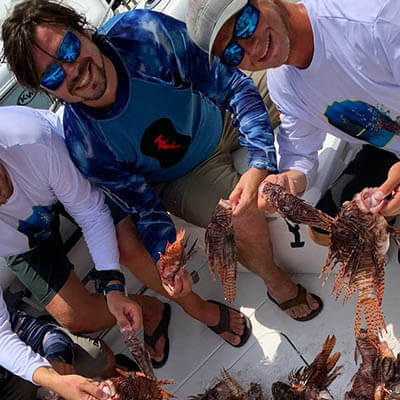
Book your next fishing trip!
NOAA's Office of National Marine Sanctuaries serves as the trustee for a network of underwater parks encompassing more than 620,000 square miles of marine and Great Lakes waters. The system works with diverse businesses, partners, and stakeholders to promote responsible, sustainable ocean uses that ensure the health of our most valued ocean places. A healthy ocean and Great Lakes are the basis for thriving recreation, tourism, and commercial activities that drive coastal economies.
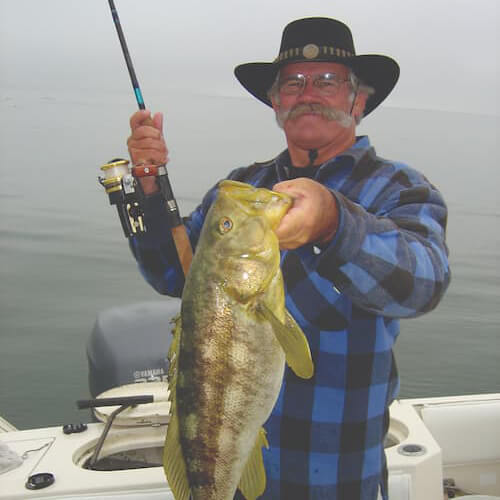
Fishing for the Future, Stories from the Blue: Captain David Bacon
Captain David Bacon is the owner and operator of WaveWalker Charters and his family owns Hook Line and Sinker fishing tackle store. While working in the high tech industry, he came to Santa Barbara, California one day on a fishing trip, and decided to stay. He became a captain and has spent decades running a fishing charter boat in the Santa Barbara Channel and around the Channel Islands. "I was born and bred for fishing – been doing it all my life – fishing and hunting." This is his Story from the Blue.
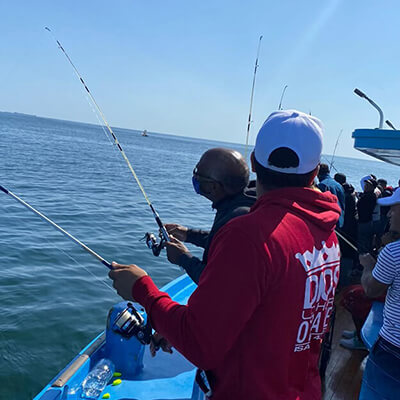
Ballena! Pescado! Santuario! Teaching Fishing in a Virtual World
The kids were glued to the railing, caught up in the excitement of seeing their first whale in the wild. Each flipper slap elicited a shout of approval. Nature’s dramatic show attracted the attention of adults, too, as they raised cameras and moaned about missed shots of an earlier humpback breach. An interesting note was that most of the awed exclamations that day were in Spanish.
October 2021
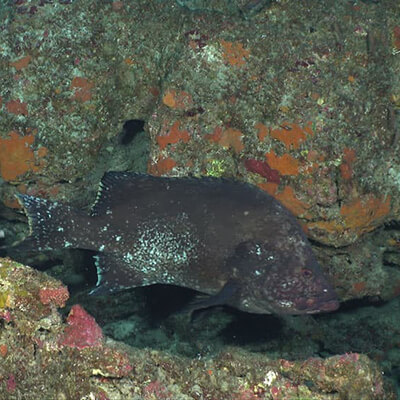
Flower Garden Banks National Marine Sanctuary Triples In Size
Flower Garden Banks National Marine Sanctuary has been expanded from 56 to 160 square miles. The expansion adds 14 additional reefs and banks to the sanctuary, with slight adjustments to the boundaries of the sanctuary's original three banks. The new sanctuary boundary extends protections to additional essential habitats for commercially and recreationally important fish, as well as habitats for threatened and endangered species, while also minimizing potential user conflicts.
January 2021
2020
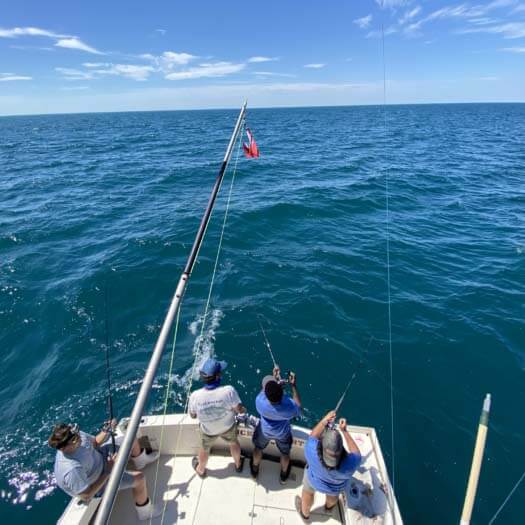
Haddock, History and Humpbacks: A Day in Stellwagen Bank
On Sunday July 26th, five Save the Harbor/Save the Bay summer youth staffers got the opportunity to go on a ten-hour marine wildlife and fishing cruise off the coast of Massachusetts. A swift push from the dock was all we needed to begin the hour and a half journey to the Stellwagen Bank National Marine Sanctuary. Captain Mike Delzingo and First Mate Bradley of Fishbucket Sportfishing Boston invited Kristen, Vanessa, Grace, Roy, and Michael to explore the bank with fishing and wildlife observation along the way. We were joined by Krill Carson of New England Coastal Wildlife Alliance (NECWA) who shared her in depth knowledge about the marine animals that inhabit the waters of Stellwagen Bank.
September 2020
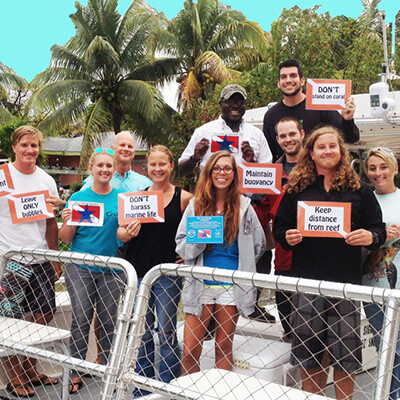
Recreating responsibly: The Seven Principles of Florida Keys National Marine Sanctuary
The Florida Keys: when you imagine such a beautiful place, your first thoughts are likely the warm sun, cool breeze, turquoise waters, and unique way of life. If you are lucky enough to visit Florida Keys National Marine Sanctuary, you also learn about the amazing world beneath the waves, including coral reefs, seagrass beds, shipwrecks and more than 6,000 species of marine life. When you send that envy-inducing postcard wishing your friends and family members were here, you hope they may travel to this destination one day. But what can you do to ensure the scenic Florida Keys will be waiting for them?
July 2020
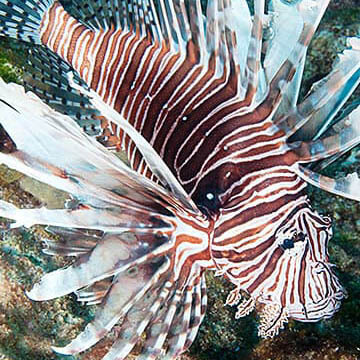
Lionfish - From Reef Raiders to Tasty Treats
Get Into Your Sanctuary Weekend
Flower Garden Banks National Marine Sanctuary is partnering with Kitchen Chick in Galveston, Texas to help you "Get Into Your Sanctuary" in a mouthwatering way! Join us to learn about invasive lionfish and why we are removing them from the sanctuary's coral reefs. Then, discover what a tasty treat they make so you can Eat 'Em to Beat 'Em!
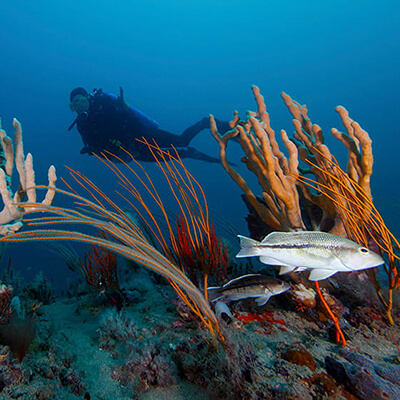
Discover Recreation Fishing and Diving at Gray’s Reef National Marine Sanctuary
Get Into Your Sanctuary Weekend
Emerging technologies used in Gray's Reef National Marine Sanctuary are making your trip to the sanctuary safer and more enjoyable. Join SCUBA instructor Joseph Glenn and Professor Peter Auster to talk about the technologies they regularly use at Gray's Reef to best utilize our research area and the fishing and diving available off Georgia's coast.
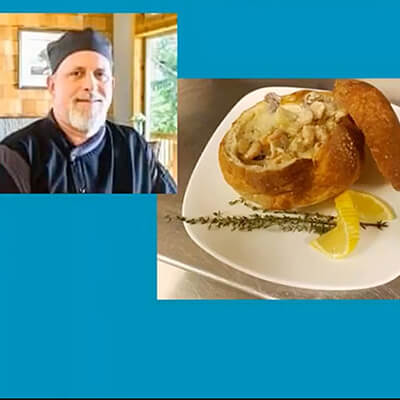
Gone Fishing! In Olympic Coast National Marine Sanctuary
Get Into Your Sanctuary Weekend
Join the winner of the Quintessential Olympic Peninsula Seafood Chowder Contest Ronald Wisner (aka Captain Ron), along with the Olympic Culinary Loop Director Steve Shively, as we dive in for a live cooking demonstration that you can follow along at home. This delectable recipe will make your mouth water while celebrating the riches of Olympic Coast National Marine Sanctuary! Ronald Wisner is the Executive Chef at Ocean Crest Resort in Moclips, Washington and will share his award-winning recipe, along with other secrets from his kitchen to yours.
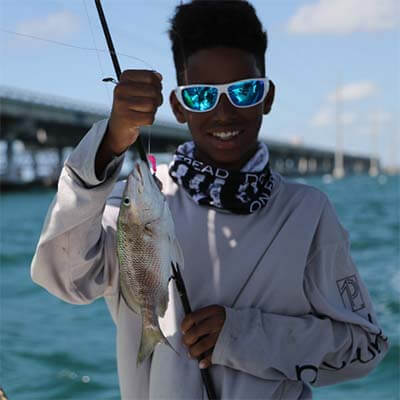
Go Fish: Recreation Around the National Marine Sanctuary System
Recreational fishing is an integral part of American coastal life and communities, offering both economic vitality and conservation benefits. And, about 98 percent of national marine sanctuary waters offer the opportunity to do so.
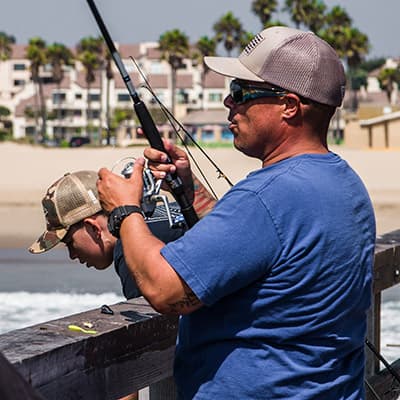
Teaching a Neighborhood to Fish
Kevin Brannon is the founder of the Reel Guppy Outdoor Fishing Program in Port Hueneme, California, which teaches local kids to fish and takes them on excursions to nearby Channel Islands National Marine Sanctuary. This is Kevin's Story from the Blue.
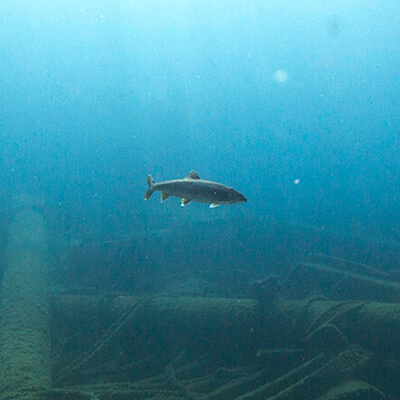
Lake Trout
Stealthy divers exploring the shipwrecks of Thunder Bay National Marine Sanctuary may encounter fish like the lake trout. The diversity of fish species in the Great Lakes spans a spectrum from warmer water species in shallow nearshore areas to cold-water species like lake trout found in deeper, open waters.
Sea Wonder: Coho Salmon
Stealthy divers exploring the shipwrecks of Thunder Bay National Marine Sanctuary may encounter fish like the lake trout. The diversity of fish species in the Great Lakes spans a spectrum from warmer water species in shallow nearshore areas to cold-water species like lake trout found in deeper, open waters.
2019
Sea Wonder: Barracuda
Twenty-eight species of barracuda call the subtropical and tropical ocean home, including a number of sites in the National Marine Sanctuary System!
December 2019
Sea Wonder: Atlantic Cod
This week’s sea wonder is the source of Cape Cod’s name: the Atlantic Cod!
December 2019
Sea Wonder: Dogtooth Tuna
Dogtooth tuna (Gymnosarda unicolor) is also known as the white tuna. They are an economically important fish found in the Indian and Pacific oceans and an important part of its food web.
December 2019
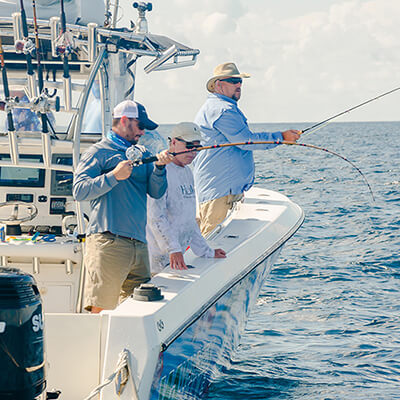
Fly fishing brings military veterans to Flower Garden Banks National Marine Sanctuary
On a calm, early Sunday morning in August, four boats headed out of Galveston Yacht Club’s marina. Onboard, eight U.S. military veterans prepared for the two and a half hour transit into the Gulf of Mexico. Fishing rods were stowed, bean bags stationed at the boats’ sterns for the passengers’ riding comfort, and rays from the sunrise beckoned all eastward. These anglers would soon be fishing in Flower Garden Banks National Marine Sanctuary. Some of them would be fly fishing using fly rods they built themselves.
November 2019
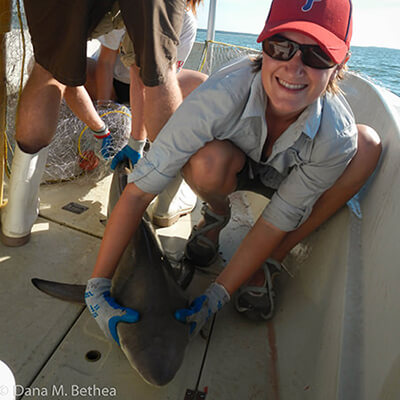
The shark took my fish: Foster Scholar Grace Casselberry investigates depredation in Florida Keys National Marine Sanctuary
It’s a bright, sunny day in Florida Keys National Marine Sanctuary — perfect for a fishing trip. As you sit on your boat, enjoying the slight rocking from the waves, you feel a tug on your line. You wrestle with an Atlantic tarpon, a large, shiny silver fish that many anglers flock to this national marine sanctuary to catch. Just as you’re about to bring the fish out of the water, a hammerhead shark swoops in and eats your prize. As you sit there mourning the loss of your tarpon, a little spark of optimism grows when you realize there is a scientist working on this exact issue. She is Dr. Nancy Foster Scholar Grace Casselberry, and she wants to prevent hammerhead sharks from eating your catch.
October 2019
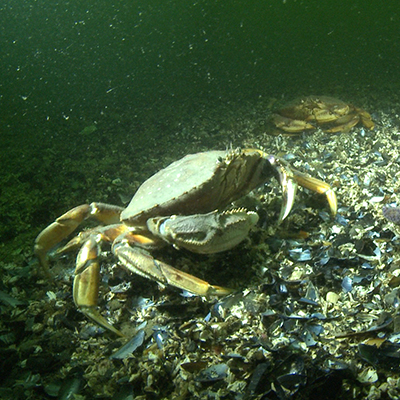
Sea Wonder: Dungeness Crab
Dungeness crab is a valuable species throughout the national marine sanctuaries of the West Coast from Washington state to throughout California.
September 2019
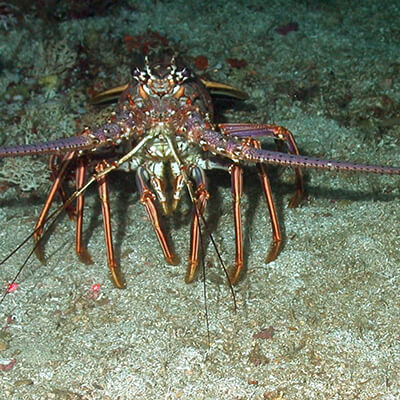
Sea Wonder: Spiny Lobseter
When you think of lobsters, you probably think of a long crustacean with large claws, antennae, and fanned, muscular tails — you may also think of dinner. However, there are lobsters of all shapes, sizes, and looks that call the ocean home. One unique species is the Caribbean spiny lobster (Panulirus argus), also known as crawfish, which are found in the Caribbean Sea, Gulf of Mexico, and the Atlantic Ocean, including Florida Keys National Marine Sanctuary.
July 2019
Collaboration is Key to New Study of Local Fisheries Near Stellwagen Bank
When you think of lobsters, you probably think of a long crustacean with large claws, antennae, and fanned, muscular tails — you may also think of dinner. However, there are lobsters of all shapes, sizes, and looks that call the ocean home. One unique species is the Caribbean spiny lobster (Panulirus argus), also known as crawfish, which are found in the Caribbean Sea, Gulf of Mexico, and the Atlantic Ocean, including Florida Keys National Marine Sanctuary.
August 2019
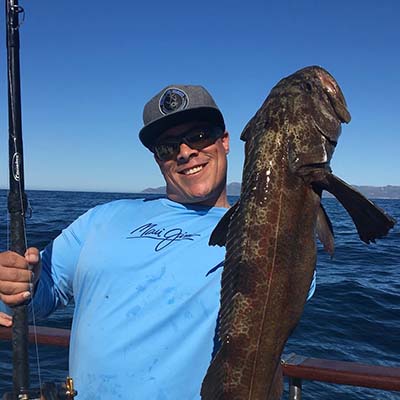
Stories from the Blue: Kevin Brannon
"The Reel Guppy Program is a program that I started knowing that our neighborhood needed something positive for kids to do, something free in our own backyard, in our community, a way to show kids the outdoors and fishing. It's a way to teach them about the ecosystem, about being stewards." Meet Kevin Brannon, founder of the Reel Guppy Outdoor Program, which works to get kids out on the water to "catch a memory."!
July 2019
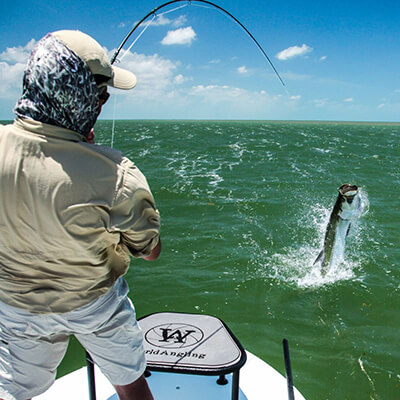
Foundation Study Finds Florida Keys National Marine Sanctuary Contributes $4.4 Billion Annually to Florida's Economy
The National Marine Sanctuary Foundation released a study showing that economic activity generated in Florida Keys National Marine Sanctuary is responsible for contributing $4.4 billion and 43,000 jobs across the state of Florida.
July 2019

What are Blue Star Fishing Guides?
Florida Keys National Marine Sanctuary provides numerous opportunities for locals and tourists to enjoy the sun and waves. Among these activities are guided SCUBA diving and snorkeling tours and fishing charters or guided trips. When you book with a Blue Star recognized operator, you are choosing to have fun with a purpose.
July 2019
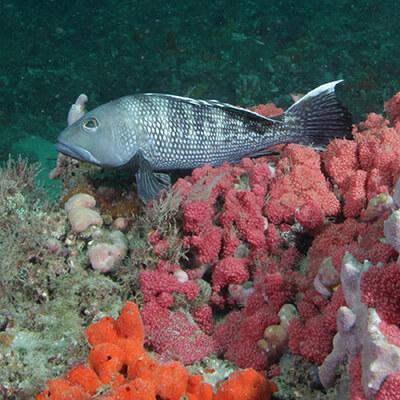
Creature Feature Black Sea Bass
Dive or fish in Gray’s Reef National Marine Sanctuary, and you’re likely to come across many black sea bass. These fish are a popular and sustainable choice for many recreational fishers. In Gray’s Reef, black sea bass play an important role as predators, keeping populations of crabs, shrimp, and small fish in check. As protogynous hermaphrodites, black sea bass will switch sexes as they mature, generally starting out as female and changing to male.
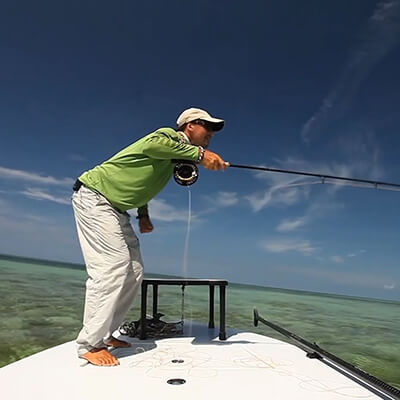
Blue Star of the Ocean
Captain Will Benson has been a fishing guide in Florida Keys National Marine Sanctuary since he was 19 years old. The sanctuary is his home, and each day he works to protect it. A member of the sanctuary’s advisory council, Benson was instrumental to the creation of the Blue Star Fishing Guides program, which recognizes fishing charter operations that promote responsible and sustainable practices. This is his Story from the Blue.
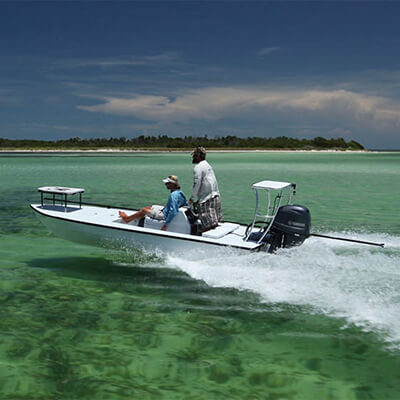
Boaters beware: Florida Keys waters are tricky
It’s hard to resist the lure of the uniquely beautiful waters surrounding the Florida Keys. But beware: boating in the waters around these islands is like nowhere else on Earth. It is all at once glorious and dangerous, for both you and the area’s fragile ecosystems.
April 2019
2018
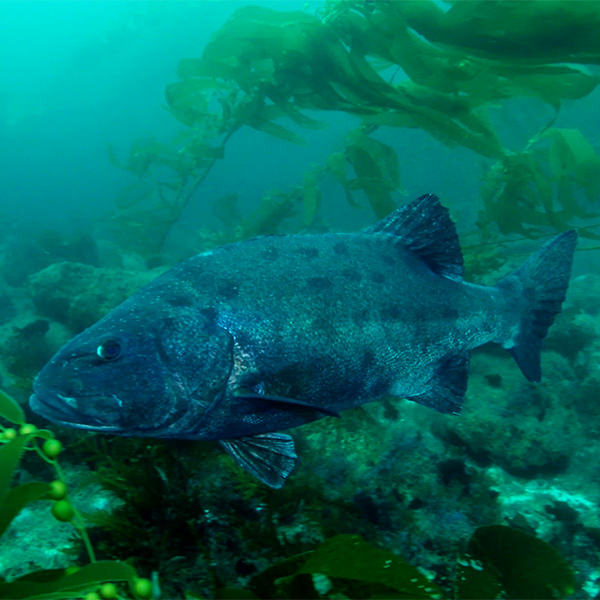
The Return of the King: Researchers track giant sea bass populations in the Channel Islands National Marine Sanctuar
Translucent, aqua-tinted water surrounds scuba divers as they weave through trailing kelp fronds at Channel Islands National Marine Sanctuary. Above them the surface of the Pacific Ocean is in constant motion. Below the ocean surface, towering stands of giant kelp grow in the cool, nutrient-rich upwelling currents of the national marine sanctuary. While wandering through this seemingly endless underwater forest, lucky divers in Channel Islands National Marine Sanctuary just may find themselves face to face with the elusive king of this watery realm – the giant sea bass.
December 2018
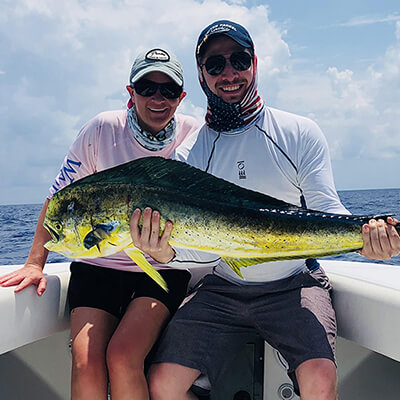
NOAA and Florida Keys fishing guides partner to support sustainable recreational fishing
Long considered an angler’s paradise, the sandbars, flats, channels, and reefs in the Florida Keys provide year-round opportunities for anglers who dream of catching a "fish of a lifetime." These lush habitats support charter fishing captains and guides whose livelihoods depend on a healthy, productive ecosystem.
September 2018
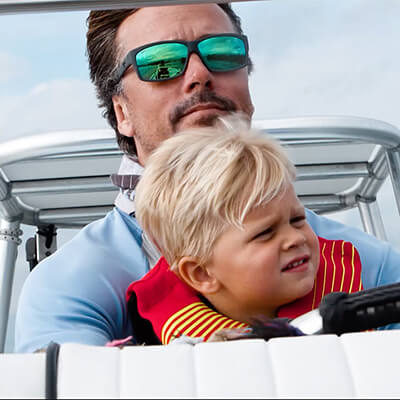
Stories from the Blue: Will Benson
"Every time my young son Luke says, 'Dad, I want to go fishing, I want to catch tarpon,' I'm reminded that I better to do my part now to make sure that that future is available to him." Watch our video to hear Volunteer of the Year Captain Will Benson's Story from the Blue. You can learn more about the Blue Star Fishing Guide program and support a sustainable Florida Keys National Marine Sanctuary.
July 2018

NOAA and Florida Keys fishing guides collaborate to support a sustainable national marine sanctuary
With thousands of people each year fishing in Florida Keys National Marine Sanctuary waters, charter captains and guides play a critical role in protecting and managing fisheries within the sanctuary. Captains and guides have extensive knowledge of the ecosystem on which the Keys economy is built. With that in mind, they are uniquely positioned to help educate the public about sustainable fishing best practices and to give insight into how sanctuary fisheries have changed over time.
May 2018
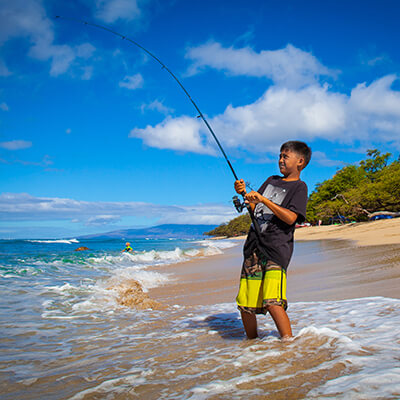
NOAA, recreation industry to strengthen sustainable fishing and boating in federal waters
"With thousands of people each year fishing in Florida Keys National Marine Sanctuary waters, charter captains and guides play a critical role in protecting and managing fisheries within the sanctuary. Captains and guides have extensive knowledge of the ecosystem on which the Keys economy is built. With that in mind, they are uniquely positioned to help educate the public about sustainable fishing best practices and to give insight into how sanctuary fisheries have changed over time.
February 2018
2017
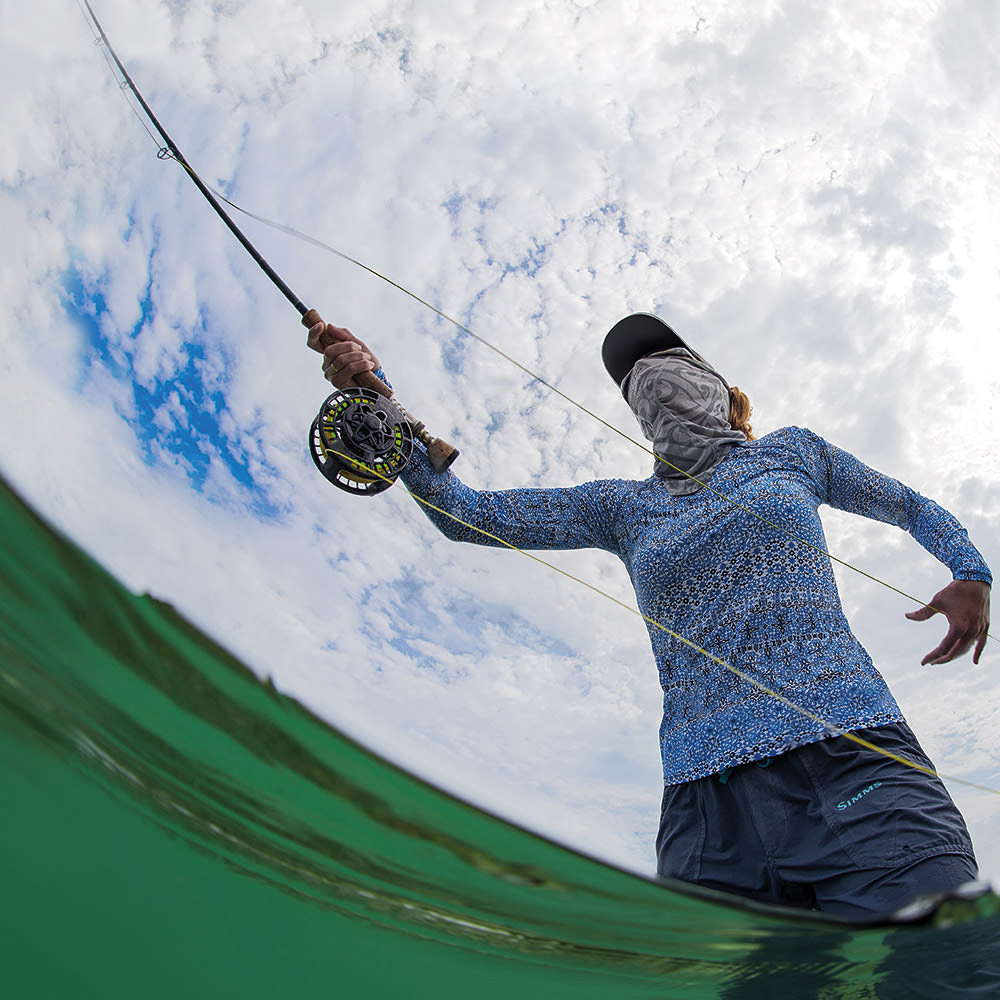
Enjoying Your Sanctuaries
Recreational fishing and boating are among the most popular activities in the United States. More than just favorite pastimes, these activities are a source of economic vitality to coastal communities. In conserving the places cherished by recreational saltwater anglers and Great Lakes sport fishermen, national marine sanctuaries celebrate the boating lifestyle and sportfishing culture. Sanctuaries welcome visitors to have their own sustainable on-the-water experiences and be fellow stewards of our marine resources.
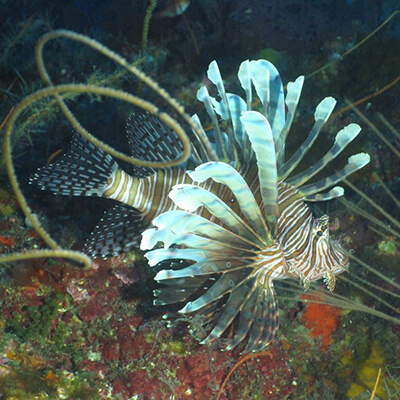
NOAA and Partners release new trap designs to corral invasive lionfish in deep water
How do you control a harmful invasive species before it damages reef ecosystems? NOAA and its partners have developed and released designs for new lionfish traps that could provide the first realistic means of controlling invasive deep-water lionfish populations and support the development of a lionfish fishery.
March 2017
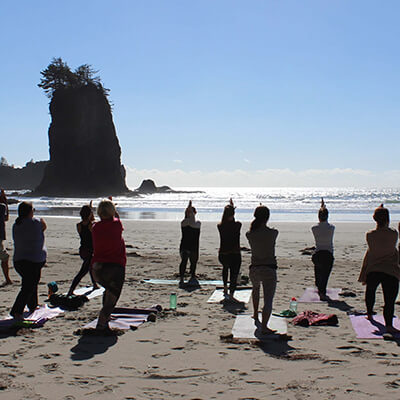
Olympic Coast National Marine Sanctuary supports jobs, business income
Visitors to NOAA’s Olympic Coast National Marine Sanctuary and the immediate area boosted the region’s economy with $102 million in spending, supporting nearly 1,200 jobs and generating $46 million in local income for business owners and employees in 2014, according to a NOAA analysis using the most recent figures available.
February 2017
2016
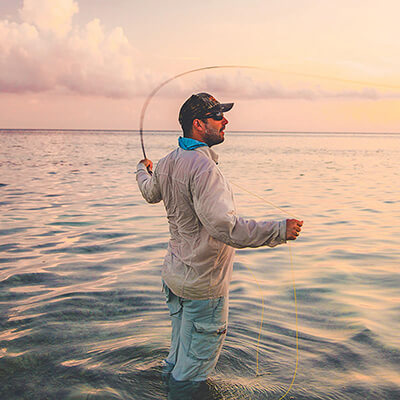
Get into the Blue: A Fly Fisherman’s Voice - Nathaniel Linville
Much like many of the people who migrate to the warm climate and crystal blue waters of the Florida Keys, the owner, Nathaniel Linville, is originally from New York. What brought him here, however, was not the lively Duval Street or the delicious Cuban food. It was the lure of the big catch — and that's what the Keys are known for.
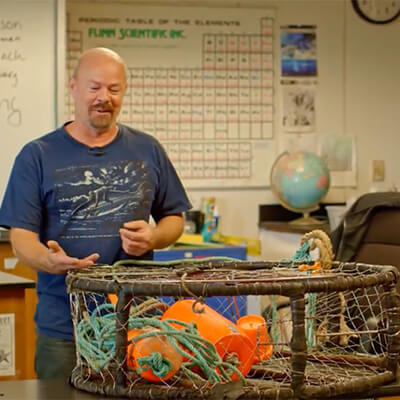
Fisherman in the Classroom
The Fisherman in the Classroom program invites commercial fishermen from Greater Farallones National Marine Sanctuary into the classroom to help students understand how they are connected to the ocean. Watch our video to learn more! #EarthIsBlue
February 2016
2015
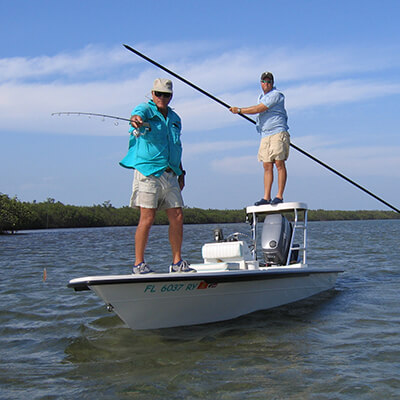
Gone Fishing
It's before dawn in North Key Largo, Fla., and Jack Curlett is already out on the water. He guides his 18-foot skiff through the channels of Florida Bay in the ethereal early-morning light, gliding past spoonbills and egrets wading in the shallows. As the sun rises, it streaks the inky purple waters with shimmering orange and gold, spreading until the entire bay seems bathed in fire and the divide between sea and sky almost disappears.
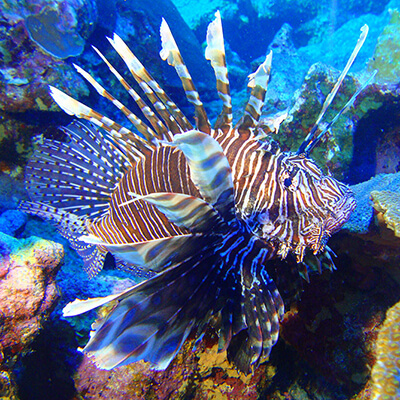
Volunteers remove lionfish from Flower Garden Banks National Marine Sanctuary
Trained volunteers and research partners recently conducted fish surveys and removed 317 lionfish at Flower Garden Banks National Marine Sanctuary in the Gulf of Mexico. The work is part of an effort to better understand the effects of lionfish, an invasive species, on native fish communities and habitats in the sanctuary.
October 2015
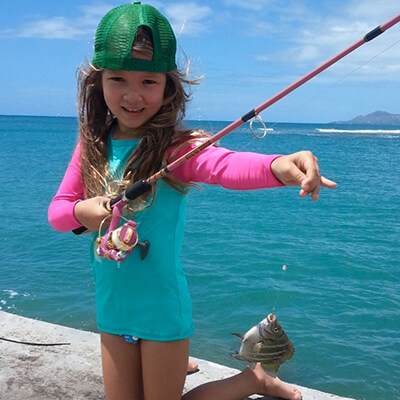
Sanctuary Classic
Catch! Click! Release! It’s time for the fourth annual Sanctuary Classic, a free fishing and photo contest that celebrates recreational fishing in America’s national marine sanctuaries.
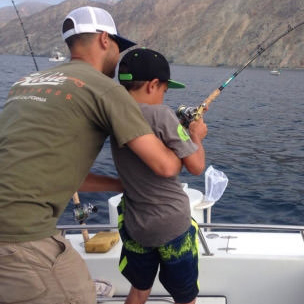
New NOAA report shows significant economic benefits of recreational fishing in California’s national marine sanctuaries
Anglers spent approximately $156 million on saltwater recreational fishing in California's four national marine sanctuaries on average, which generated more than $200 million in annual economic output and supported nearly 1,400 jobs, according to a new NOAA report released today. The peer-reviewed report cited data ranging from 2010-2012, the most recent years for which this data is available, from the California Department of Fish and Wildlife.
June 2015

On the Hunt for Answers: Dr. Michelle Johnston on driving back the lionfish invasion
A highly invasive species, lionfish prey on native species, quickly destroying biodiversity and threatening ecosystems. Since they have a high breeding rate and are not subject to any predators themselves, they thrive and multiply. Florida Keys and Flower Garden Banks national marine sanctuaries have become home to the lionfish, and there have been sightings at Gray's Reef and Monitor as well. Dr. Michelle Johnston, ONMS project coordinator at Flower Garden Banks National Marine Sanctuary, has spent years concerned with what the future holds for both lionfish and sanctuaries.
May 2015
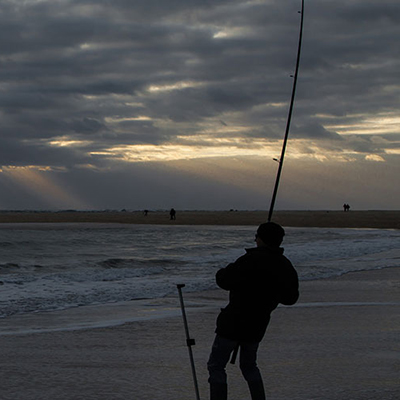
Sanctuaries provide safe haven for America's endangered marine species
As part of the Socioeconomic Research and Monitoring Program for the CINMS, this report supports priorities to document connections between sanctuary resource uses and local, regional and national economies. Using CDFW data, this report addresses the economic impact of recreational fishing on local county economies and the trends of recreational fishing with the CINMS. Economic data presented is for years 2010 through 2012. Data on trends in fishery profiles is presented for years 2004 to 2012.

